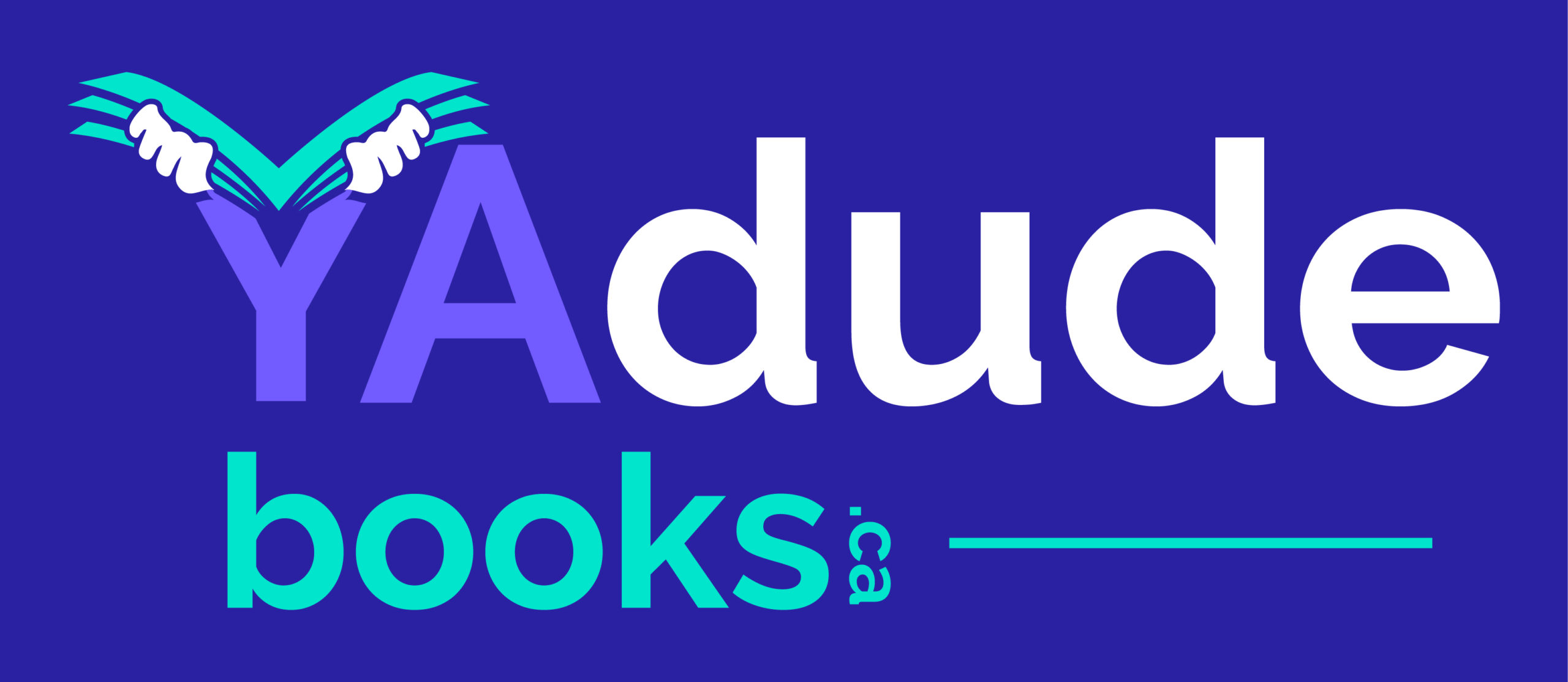Andrew Varga is a historian and author who writes middle-grade/young-adult novels set across various historical periods. He has written seven fantasy-historical books that make up the Jump in Time series, including the forthcoming The Celtic Deception and The Last Saxon King (Imbrifex, 2023). His passion for history led him to earn a BA from the University of Toronto in Canada, where he specialized in history and majored in English.
Andrew has traveled extensively across Europe, where he has visited many historical sites and museums. His love of medieval history is reflected in his collection of swords, shields and other weapons amassed during his travels. He is skilled in fencing, Kendo and other martial arts, and is also proficient in the use of longbows and crossbows.
Andrew currently lives outside Toronto with his wife Pam and their three children. It was his children’s love of reading, particularly historical and fantasy stories, that inspired him to write his series of books. In his spare time, Andrew enjoys reading history books, playing the guitar, watching basketball and playing volleyball.
More about Andrew Varga: http://www.andrewvargaauthor.com/
Additional background about his books: https://imbrifex.com/series/a-jump-in-time/
Q: What inspired you to write for teens, and do you have boy readers in mind when you write?
A: The inspiration for the series came over a decade ago while I was driving back from Myrtle Beach, S.C., where my family and I had just spent our vacation. As I stared out at endless highway, I realized that the current book I had been working on for a few years, a fantasy comedy in the vein of Terry Pratchett, just wasn’t going anywhere. I decided during that drive that I needed to write something new. My kids were roughly 16, 14 and 11 at the time (the oldest a girl, the younger two boys), and I had been exposed to a lot of the books they had been reading. The one common thread I had found in many of the books was that historical accuracy wasn’t a focal point. And, since I’ve been a life-long student of history, I thought that there might be an audience for a series of books, geared for teens, that explored real history. It was during this long drive that I began to iron out the details of the series. Although I chose to tell the story from a male perspective, and male readers might identify with my protagonist, these books are for everybody. I just wrote about things that I found interesting and entertaining, and I hoped that all readers would share my interest.
Q: What do you enjoy most about writing historical fiction, and hope readers will take away from your books?
A: I love going in-depth into a particular historical period and finding some nugget of information that totally surprises me. For instance, when I wrote The Last Saxon King, I was surprised by the fact that before the Battle of Stamford Bridge, the Vikings were so unaware of the approaching Anglo-Saxon army that they were swimming in the river and none of them had brought any armour. So, of course, I included this little detail in my book. And I want my readers to get to this section and say, “That’s incredible! Did this really happen?”, and then go off on their own quest for knowledge. There are so many fascinating details of history. I hope that by sharing some of them, I’ll be able to spark some person’s journey into history.
Q: How do you conduct research and incorporate historical accuracy into your storytelling?
A: I always start by reading the primary sources—that is, the sources that were written close to the time of the actual events. This provides me with an understanding not only of the events themselves, but also how people viewed those events at the time. The two main drawbacks of primary sources are that sometimes they can be heavily biased to one side or the other, and at other times they can be pretty sparse.
Once I’ve read the primary sources, I’ll then do quite a bit of secondary research to see what the archaeological record has said regarding buildings, clothing, food, etc., and I’ll read modern historians to fill in any gaps in my understanding. Once I have a pretty clear picture of the time period and the events in question, I’ll start weaving them into the text. And I try not to do this overtly, because then my book will sound like a history presentation. I try to be very subtle.
For instance, during the Battle of Hastings scene, I mention that the Norman archers drew their bow strings back to their chests (instead of their cheek or ear) before firing. This is a totally minor detail that I could guarantee 99% of people would not notice, but it was the historically-accurate firing method of archers at that time. So I will sprinkle in these little snippets of information whenever I can.
Q: How do you balance creating compelling and engaging stories with staying true to the historical events and figures?
A: This is the question I asked myself when I first started thinking of the series. Because, although historical accuracy is very important to me, I knew that history alone might not be enough to keep readers interested. That’s why I decided to make this a time-travel series.
First off, it would allow me to take a modern-day teenager and throw him into different regions and time periods of the world. By reading about Dan’s “culture shock” as he lands in each new location, I hope my modern-day readers can imagine themselves in his not-so-competent shoes as he stumbles around meeting the various historical figures that lived there and experiencing major historical events in person.
Secondly, since Dan is tasked with finding time glitches and setting history on its proper course, each book becomes its own little mystery of identifying what is wrong with time, and then finding out how Dan sets things on the right path to stay true to the historical timeline.
And, of course, I always make sure that nothing is ever easy for Dan. As a “tourist” in a strange world, and a newcomer to time travelling, he’s going to make mistakes that lead him into trouble. And finally, in order to tie all books in the series together, I created the rogue time-jumper plot. So setting history onto its proper course is not the only challenge that Dan faces—he also has to overcome a larger threat to the modern world.
Q: What advice do you have for aspiring writers interested in historical fiction?
A: My advice is that any aspiring historical fiction author should really love the age that they are writing about. For instance, although Tudor England seems to be very popular right now, I will probably never write about that time period because it just doesn’t pique my interest—so any research I might do would feel like work. When I was researching Anglo-Saxon England, I pored through the Domesday Book, looking at property records for individual villages to find out how big they were and who ruled them. I went to different websites to research construction techniques and the different foods available at that time. I found maps of the ancient Roman roads that criss-crossed England so that I could recreate King Harold’s most likely route. I read pages upon pages of the primary sources to get a full understanding of the battles and the people involved. I read up on the defence system of the later Anglo-Saxon period so that I could understand the obligations that individual lords had to the king. If your eyes are beginning to glaze over now, then I think you get the point—if you don’t love the time period, then all of this research will become a chore.
Q: How has your writing evolved over the years and what do you have planned for future books?
A: When I first started writing novels, over two decades ago, my descriptions were poor, my point of view was jumbled, I used tons of weak verbs that I’d prop up with adverbs (e.g., “he ran quickly” instead of “he dashed”), I used a lot of telling instead of showing, I’d repeat words constantly and I wouldn’t delve much into the emotional or physical responses of the characters.
Basically, my writing was what you’d expect from a beginner writer. However, I was fortunate to be part of a local critique group and, by providing constructive criticism and feedback, we supported each other to become better writers. So most of the weaknesses in my writing became smoothed out. I wouldn’t say that all of my weak writing is gone, but it’s less noticeable.
As for my future books, I have seven in total planned for the Jump in Time series. The first one, The Last Saxon King, will launch in March 2023, and will be followed by The Celtic Deception in September of the same year. This book takes place in Celtic Wales during the Roman conquest. In September of 2024, The Mongol Ascension comes out, sending Dan to medieval Mongolia during the rise of Genghis Khan. The next three books don’t have a publication date yet, but they have already been written. They are: The Spartan Sacrifice, taking place in Greece during the Battle of Thermopylae; The Orleans Ordeal, taking place in 1429 France during Joan of Arc’s breaking of the siege of Orleans; and then The Roman Betrayal, which takes place in the actual city of Rome during the reign of Domitian (around 89 CE). And I’m currently working on the final book, Ragnarok, which takes place in Norway around the turn of the millennium.
Q: Do you have any book recommendations for male middle-grade and young-adult readers (or their parents and teacher-librarians)?
A: I mainly read history books in my few bits of free time when I’m not writing, editing or researching. However, the last YA series that I enjoyed was The Immortal Nicholas Flamel by Michael Scott. The six-book series takes two modern-day teens and pits them in a classic struggle against evil forces. It has characters from Greek, Norse, Egyptian and Celtic mythology, as well as famous individuals from the past or from legend—all interwoven into one huge narrative.
And from a history perspective, I’d definitely recommend Legionary: The Roman Soldier’s (Unofficial) Manual and Gladiator: The Roman Fighter’s [Unofficial] Manual both by Philip Matyszak. These books are historically detailed, but in a light-hearted manner with short chapters, many illustrations and some funny asides. They are great introductions to history.
– Weldon Ngetich

